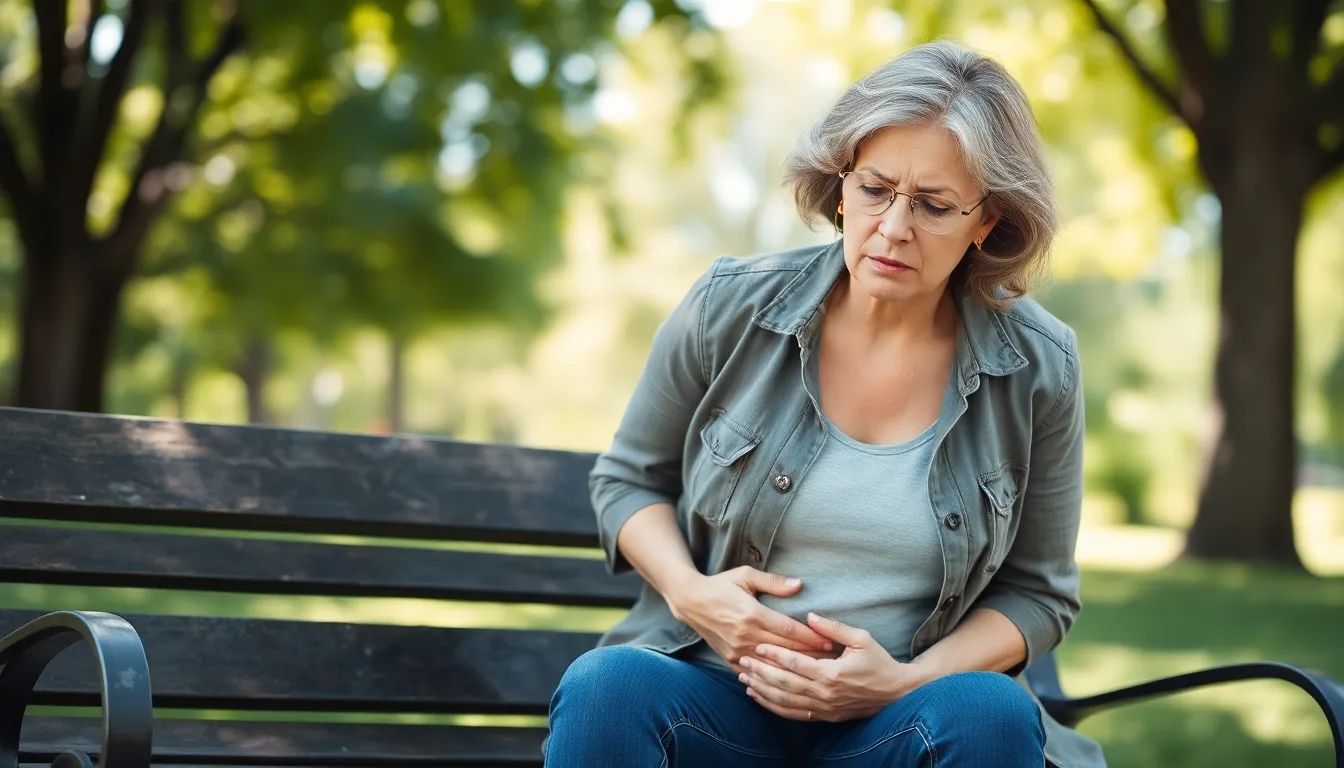Picture this: you’re in a meeting, trying to focus, when suddenly your bladder decides to throw a surprise party. Bladder spasms can feel like an uninvited guest crashing your plans, leaving you scrambling for the nearest restroom. These sudden contractions can catch anyone off guard, turning a mundane moment into a race against time.
But what exactly do these spasms feel like? They can range from mild discomfort to intense urgency, leaving many wondering if their bladder has developed a mind of its own. Understanding these sensations is key to managing them effectively. So, let’s dive into the world of bladder spasms and explore what they really feel like—because knowing is half the battle, and laughter might just be the best medicine.
Table of Contents
ToggleUnderstanding Bladder Spasms
Bladder spasms involve sudden contractions of the bladder muscle, leading to unpredictable urges. Recognizing the sensations tied to these spasms plays a critical role in managing them effectively.
Definition of Bladder Spasms
Bladder spasms describe involuntary contractions of the detrusor muscle found in the bladder. These contractions can occur sporadically, resulting in a strong urge to urinate, often accompanied by pain or discomfort. Many experience varying levels of intensity, ranging from slight annoyance to significant distress. Understanding this definition helps individuals identify when they are experiencing spasms and seek appropriate relief methods.
Common Causes
Several factors contribute to the onset of bladder spasms. Overactive bladder syndrome frequently triggers these contractions. Other causes include urinary tract infections, which irritate the bladder, leading to spasms. Also, bladder stones can create pressure and provoke sudden contractions. Neurological conditions like multiple sclerosis may disrupt communication between the brain and bladder, resulting in spasms. Each potential cause emphasizes the need for comprehensive evaluation and targeted treatment to address underlying issues.
Symptoms of Bladder Spasms

Bladder spasms manifest through various symptoms that affect physical and emotional well-being. Recognizing these symptoms aids in understanding the condition better.
Physical Sensations
Sudden urges to urinate occur frequently during bladder spasms. Intense discomfort often accompanies these urges, manifesting as pain or pressure in the lower abdomen. Some individuals report a burning sensation, which can become quite distressing. Excessive frequency of urination may disrupt daily activities, leading to inconvenience and embarrassment. Awareness of these physical sensations helps manage triggers and identify necessary interventions.
Emotional Impact
Bladder spasms can lead to feelings of anxiety and frustration. Many individuals experience embarrassment stemming from the unpredictability of their symptoms, affecting social interactions. Stress often exacerbates the spasms, creating a cycle that impacts both physical and mental health. Individuals may also feel isolated as bladder issues often remain a private matter. Understanding the emotional implications provides insight into coping strategies that improve overall well-being.
Diagnosing Bladder Spasms
Diagnosing bladder spasms involves a comprehensive assessment to identify underlying causes. Initial evaluations often require a detailed medical history and description of symptoms.
Medical Evaluation
Healthcare providers typically perform thorough medical evaluations to determine the presence of bladder spasms. Patients share their experiences, including frequency and intensity of symptoms. This dialogue helps clinicians identify possible conditions such as overactive bladder syndrome or urinary tract infections. Physicians may also inquire about any medications, lifestyle factors, or history of neurological issues that could contribute to bladder spasms. Establishing a clear understanding of the individual’s health background aids in developing an effective treatment plan.
Tests and Procedures
Various tests and procedures assist in diagnosing bladder spasms accurately. Urinalysis examines for signs of infection or other abnormalities in urine. A cystoscopy allows direct visualization of the bladder, helping to identify stones or lesions. Urodynamic studies measure bladder pressures and capacity, providing insight into bladder function. These tests collectively guide healthcare providers in forming a targeted approach to managing bladder spasms effectively, ensuring that patients receive appropriate treatment options.
Treatment Options
Understanding the various treatment options for bladder spasms helps manage discomfort effectively. Individuals can explore several strategies to alleviate symptoms and improve quality of life.
Lifestyle Changes
Implementing lifestyle changes proves beneficial for many experiencing bladder spasms. Maintaining a healthy weight reduces pressure on the bladder, while staying hydrated can prevent irritants from concentrating in urine. Avoiding caffeine and alcohol decreases bladder stimulation, often leading to fewer spasms. Regular exercise strengthens pelvic floor muscles, enhancing bladder control. Additionally, establishing a consistent bathroom routine can help train the bladder, minimizing urgency and discomfort.
Medications
Several medications target bladder spasms directly, providing significant relief. Anticholinergics, such as oxybutynin, block nerve signals that trigger involuntary contractions. Beta-3 adrenergic agonists like mirabegron relax the bladder muscle, allowing for greater capacity and less urgency. Botox injections may also help by temporarily paralyzing the bladder muscle, reducing spasms. Additionally, antidepressants and antispasmodics can decrease the frequency of urges, making daily activities more manageable.
Alternative Therapies
Exploring alternative therapies offers additional avenues for relief from bladder spasms. Acupuncture may improve nerve function and reduce symptoms. Dietary modifications, like increasing fruits and vegetables, can enhance bladder health. Herbal supplements, such as pumpkin seed extract, demonstrate potential in managing bladder issues. Mindfulness practices and stress reduction techniques can alleviate emotional triggers associated with bladder spasms. These complementary approaches may benefit individuals seeking holistic management options.
Conclusion
Bladder spasms can significantly impact daily life and emotional well-being. Understanding the sensations and triggers associated with these spasms is essential for effective management. By recognizing symptoms and their underlying causes individuals can take proactive steps toward relief.
Implementing lifestyle changes and exploring various treatment options can lead to improved quality of life. It’s important for those experiencing these spasms to seek support and consider both medical advice and holistic approaches. With the right strategies in place individuals can regain control and reduce the frustration associated with bladder spasms.










